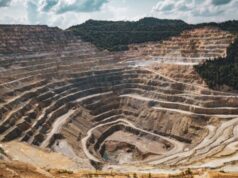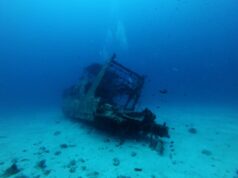New research has uncovered how an ancient human population adapted effectively to climate change, offering insights that are useful for the environmental challenges of today. The recent study examines the fishing patterns of prehistoric hunter-gatherers in Patagonia, a region at the southern tip of South America. Archaeologists used fish remains to piece together thousands of years of history in the region, painting a fuller picture of the area’s prehistoric societies and how they interacted with and transformed their natural surroundings.
A team of Chilean and French archaeologists examined the bones of tadpole codling, a native fish, to determine the seasonal fishing habits of the area’s ancient societies. Tadpole codling live on the rocky continental shelves along southern Patagonia’s coastline and in the Strait of Magellan, a channel that connects the Atlantic and Pacific Oceans. Along with fishing artifacts, tadpole codling remains are abundant throughout the region, indicating that they were a common food source for prehistoric peoples.
Jimena Torres, lead author of the study and archaeologist at the University of Magallanes in Chile, explained to GlacierHub that the objective of evaluating seasonal fishing patterns was to understand the lifestyles of prehistoric hunter-gatherers and place them in the context of ecological changes throughout the time period, both seasonal and long-term.
Fishing was one of the ways prehistoric Patagonians adapted to the fruits of their environment. The waters surrounding the southern tip of South America are highly productive and abundant with fish and marine life. This is thanks to the Humboldt Current, an ocean current that runs along the western coast of the continent and facilitates upwelling—a phenomenon where cool, nutrient-rich waters replace warmer surface waters along the coast.
The researchers used a technique that is similar to the study of tree rings to examine the fish bones. This technique involves looking at annual growth rings in hard tissues such as bones, teeth, and inner ear bones to reveal information about an organism’s age and life history. The team excavated tadpole codling bones embedded in shell middens at various sites throughout the Strait of Magellan. Middens are heaps where prehistoric communities discarded food waste, like the shells of mollusks. Their layers tell a story of change over hundreds and thousands of years—as archaeologists dig deeper through a midden, they find artifacts from further back in time. Middens, which are found on coastlines throughout the world, can provide all sorts of insights for archaeologists about the lifestyles of the communities that once inhabited a region.
Find your dream job in the space industry. Check our Space Job Board »
The archaeological samples from this study come from a range of thousands of years. The bones dated back to various points throughout the middle and late Holocene and suggest that the hunter-gatherers who caught the fish likely lived between approximately 5,500 and 1,000 BCE, although most of the samples were concentrated in the latter part of that period. The Holocene is the current geologic epoch, which has lasted for approximately the last 11,700 years. This era is characterized by the proliferation of modern humans throughout the world, the development of civilizations, and complex human engagement with the environment.
The hunter-gatherers of Patagonia and Tierra del Fuego in the middle and late Holocene comprised various groups of people, including the Yaghan and Kaweskar, who were fishermen, and Selk’nam, who relied more on land animals like the guanaco. Those who were maritime nomads travelled by canoe and had extensive knowledge of how to navigate the complex fjords and waterways of the region. They used tools like harpoons to hunt various types of fish, seabirds such as cormorants and albatross, and marine mammals like seals. These livelihoods sustained communities in the harsh environment centuries before Spanish colonization. Genocide diminished many of these societies, but some descendants of these Indigenous groups still live in Patagonia today.
Researchers relied on tadpole codling vertebrae samples, which were well-preserved despite being small and thousands of years old. By examining the growth rings on each bone, the team estimated the lifespan of each organism and the season in which it was captured by fishermen. A summer-caught fish had larger measurements than fish caught in the colder months, when growth slowed down.
The team analyzed remains from a total of four sites throughout the area and found that the inhabitants’ fishing patterns varied, suggesting year round harvest with an emphasis on the colder or warmer season from place to place. The seasonality of these ancient peoples’ fishing practices was also supported by the discovery of other animal bones in the middens. For example, in one heap, the team found the remains of young seabirds, which would only have been present during warm months, further indicating that this particular site was probably used during summer.
These diverse patterns confirm that communities across the region and throughout time relied on the abundant resource of tadpole codling. Seasonal patterns may have developed due to various factors. Fishing may have taken place during the cold period in some locations, for example, because of the increased reliance on it as marine mammals became scarce in the winter. Some sites may have been occupied only during certain times of year, reflecting the nomadic lifestyles of communities travelling from place to place and adjusting to natural conditions.
One of the forces altering the natural conditions were glaciers. The Southern Patagonian Ice Field is the world’s second largest ice field outside of the poles and has shaped the surrounding Patagonian ecosystem for millennia. The calving of glaciers litters the region’s waterways with icebergs, creating hazards for boats to bypass. Both icebergs and meltwater from glaciers cool down sea surface temperatures, make water less saline, and dump nutrients into the sea, all of which impact the phytoplankton that work hard to sustain aquatic food webs.
Over thousands of years, the people of prehistoric Patagonia adapted to these changing climates. By modifying their dietary habits and hunting strategies, they adjusted to cycles of glacier advance and retreat, cold events, and fluctuating marine productivity throughout the Holocene period. For example, other studies indicate that around 2,500 years ago—after the timeframe of this study—productivity in the Patagonian seas declined and intense supplies of freshwater decreased salinity. This may have been a result of heavy rainfall and increased meltwater supply from glacial advance. During this period of climate change, hunter-gatherers’ reliance on fish like the tadpole codling declined greatly, and they instead adapted to different species that thrived in such environments.
Fishing is as important to the people of Chile today as it was thousands of years ago, but it faces a multitude of threats. Anthropogenic climate change and overexploitation are endangering the tradition. Fishing is a major part of the Chilean economy, practiced not only on the industrial level but also by small-scale artisanal fishermen. Nowadays, weak governance and overexploitation in some parts of the region is depleting fish populations and threatening subsistence fishermen.
In addition to fishing issues, Patagonia’s glaciers are melting at a rapid pace due to anthropogenic climate change. This leads to a vast range of concerns, from more frequent landslides to disturbed aquatic ecosystems.
Torres explained to GlacierHub the importance of understanding the relationship between human society and the environment. Early inhabitants of Patagonia spent thousands of years reacting and adjusting to natural changes. By reconstructing this cultural and ecological history and understanding the vast timeline of human existence, we can better confront the challenges of today and envision human-environment relationships that survive well into the future.
Provided by: State of the Planet
More information: J. Torres et al. Characterizing seasonal fishing patterns and growth dynamics during the Middle and Late Holocene in the Strait of Magellan (Chilean Patagonia): Sclerochronological analysis of tadpole codling (Salilota australis) vertebrae. The Journal of Island and Coastal Archaeology (2020). DOI: 10.1080/15564894.2020.1755393
Image: Torres del Paine National Park in southern Chile.
Credit: Akshay Nanavati via Unsplash











